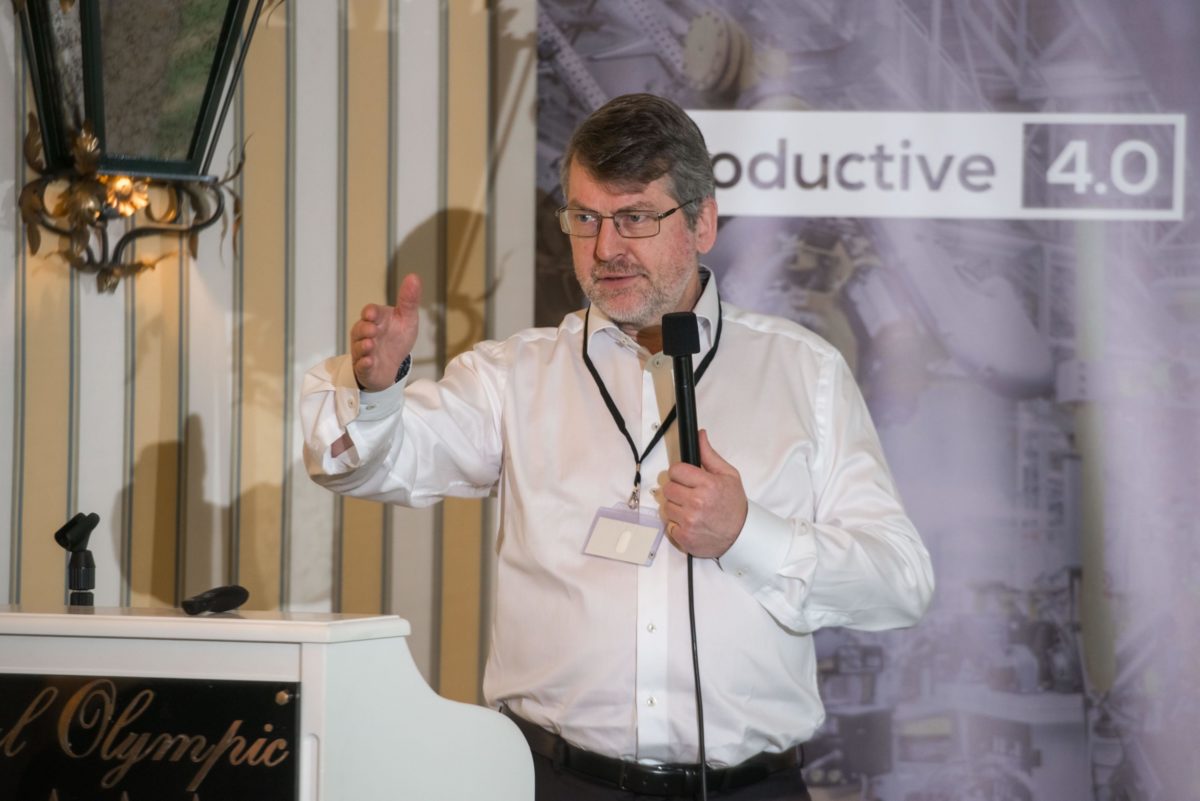
Evolving, extending, changing – Arrowhead Framework unlimited?
With 109 partners and numerous use cases Productive4.0 reflects on one of the overall challenges in digitalizing the industry: How to engineer flexibility into the production system in order to adapt to new products and services? Without a roadmap based on simplified and efficient engineering it will become expensive when a big chunk of the potentials in the supply chain gets eaten up.
In order to translate the full scale of potentials into sustainable benefits it takes a common backbone which offers more than simply the sum of constituent systems: a system of systems (SoS). This is where work package 1 comes in. Aiming at a SoS-based system architecture providing a domain independent platform, it interacts with all other work packages of the project.
Together with Swedish IT specialist BnearIT co-leader Jerker Delsing from Luleå University of Technology is taking care of establishing a platform mainly built on the results of the framework called Arrowhead. Bringing in the results of the project by the same name, the acknowledged automation expert explains and describes the profile and the specific approach of Arrowhead in an interview with Productive4.0 News.
Jerker, how would you describe the framework?
I would describe it as the fundamental technology where we can create an architecture for the integration along the supply chain. You can call it the backbone for implementing optimized supply chain management covering the entire product life cycle. In its way, it is pointing into the future. It is the most flexible and versatile system capable of meeting production automation requirements.
What distinguishes it from competing alternatives?
Arrowhead is capable of being configured for any production architecture where all other alternatives are dedicated to one or a few architecture alternatives. This in combination with the capability of real-time control which none of the alternatives I have seen is capable to do. On top, security is built in from the beginning. This is what makes it unique. We are in dialog with others who, after having implemented it, are now interoperable with the Arrowhead Framework. They simply never thought of security from the beginning.
How about safety aspects?
Safety will need another level. There is a working group within our open source project with resources coming from Productive4.0. They are looking into how safety can be addressed. It often needs to be connected with the specific installation. It is hard to talk about safety without connecting it to the actual use case or installation.
What else makes it unique: scalability? Is it unlimited?
In theory we are unlimited. We can not give numbers of how scalable it is since it has not been tested and validated. But we don’t have any limiting component in the middle. As to memory, capacities or bandwidth there are no such limitations. Further, Arrowhead is a design which makes it fundamentally distributed. From that perspective it is very different.
So Arrowhead is kind of a decentralized lean approach?
Yes, I would say so. Many other solutions and proposals have certain components of centralization with all data going to one focal point. We instead only have few data on it; there is no need to have one big machine in the middle. This is due to the decentralized approach and the highly distributed thinking. If something needs to be solved it is solved by the two or three or four units involved. And apart from all this, installing a new sensor is a question of only a few ours; with a centralized system, however, it would take days.
When did all of this start?
The first project on service oriented architectures was called Sofia, almost 18 years ago. The second was Socrades, followed by IMC ASEOP. And then came the Arrowhead project looking at very wide scale interoperability and integrabilitiy of IoT to form automation SoS. This is also where we started to have a common code base for a number of core components which is now called the Arrowhead Framework. In 2016, the consortia decided to release this code as open source.
Which are the weak points?
We cannot solve everything. The technology is not yet mature enough to be used widely in the industry and we don’t have the engineering tools to integrate information from the existing automation engineering world to the framework. It can be done but it is a lot of manual work. And we need to get tools to show that there is an industrial backbone which can implement this kind of solution for customers so they can really work. We know that Arrowhead Framework is used in products already by a number of companies.
And it is used within the Productive4.0 project…
Yes, in the project we are playing a vital role. We are using the technology and we are further developing it. Resources to further develop the basics of Arrowhead Framework are provided by Productive4.0 which again is a benefit for the project. But also to other projects which are involved in the development like FAR-EDGE. There is a flow of technology in between projects with all of them contributing to the Framework.
You’ve recently submitted a proposed project called Arrowhead Tools? How would this affect Productive4.0?
What we are doing in Productive4.0 is not duplicated by Arrowhead Tools. We are rather looking at necessary improvements. One of the proposals is training professionals with the new technology. Another core part is tools to be able to engineer solutions. With Productive4.0, the key is optimized supply chain management covering the entire product life cycle. With Arrowhead Tools we start to understand which are the components to be put together. It is going beyond a few use cases looking at how it can be done for thousands of commercial installations later on. And the analysis is: we do lack engineering tools and we do lack means of training engineers that should be part of the deployment, commissioning and operation.
To round it up, it is a backbone, a tool to smoothly shift into digitalization even for legacy systems?
Let me complement this picture with one more thing. Currently we are talking about lot size one and flexible production. Arrowhead Framework is a flexible automation system which can continuously evolve, extend and change dynamically, which is a big step beyond what current legacy proposals are capable of.
Thank you so much, Jerker.


